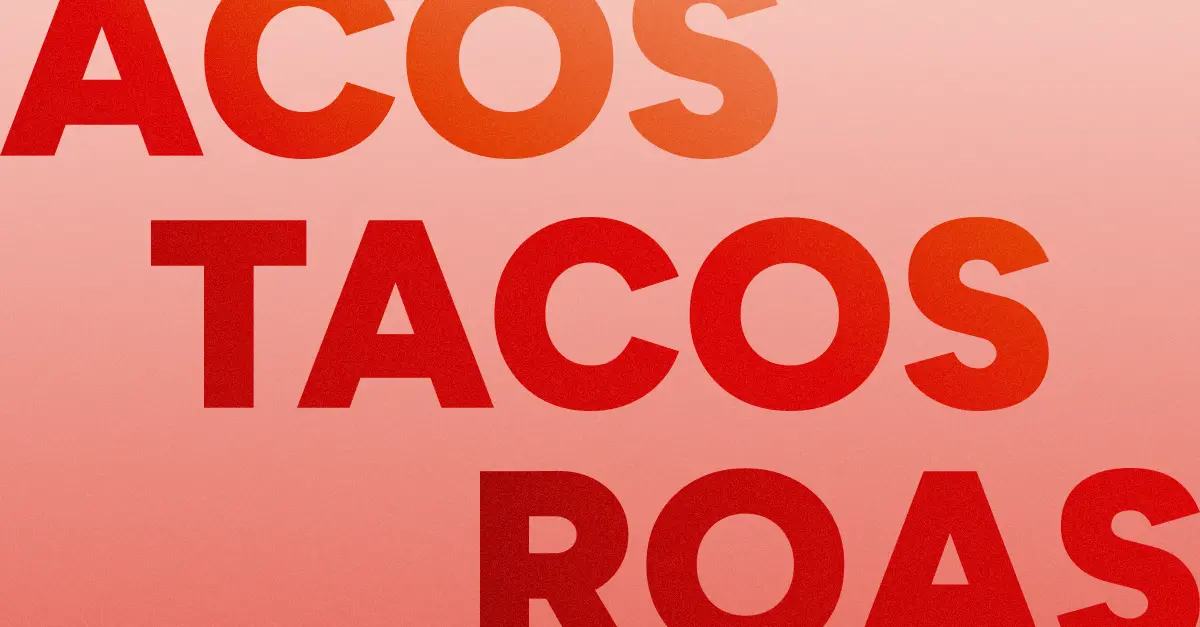The competitive nature of e-commerce makes Amazon sellers invest in ad campaigns to stand out among the vast array of competitors and increase visibility and sales. Remember that advertising campaigns on Amazon are like a bottomless pit into which you can recklessly pour an incredible amount of money without any guarantee of return, much less a profit. Advertising can take your product or brand to incredible heights, but it can also lead to bankruptcy. To prevent wasting resources, it’s crucial that you create a well-thought-out ad strategy based on an in-depth evaluation of various metrics.
Amazon’s marketplace is so competitive that the best tool to increase brand recognition and views of your product listings is PPC advertising. Amazon PPC is Amazon’s advertising platform that helps sellers promote their products on the marketplace. PPC, which stands for pay-per-click, allows sellers to pay for advertising only when a potential customer clicks on the ad.
But how do you determine whether your ad campaigns are effective and profitable? This is where metrics like ACoS, ROAS, and TACoS come in. Let’s figure out what these Amazon metrics are, why they are essential to FBA sellers, and how easy it is to calculate them.
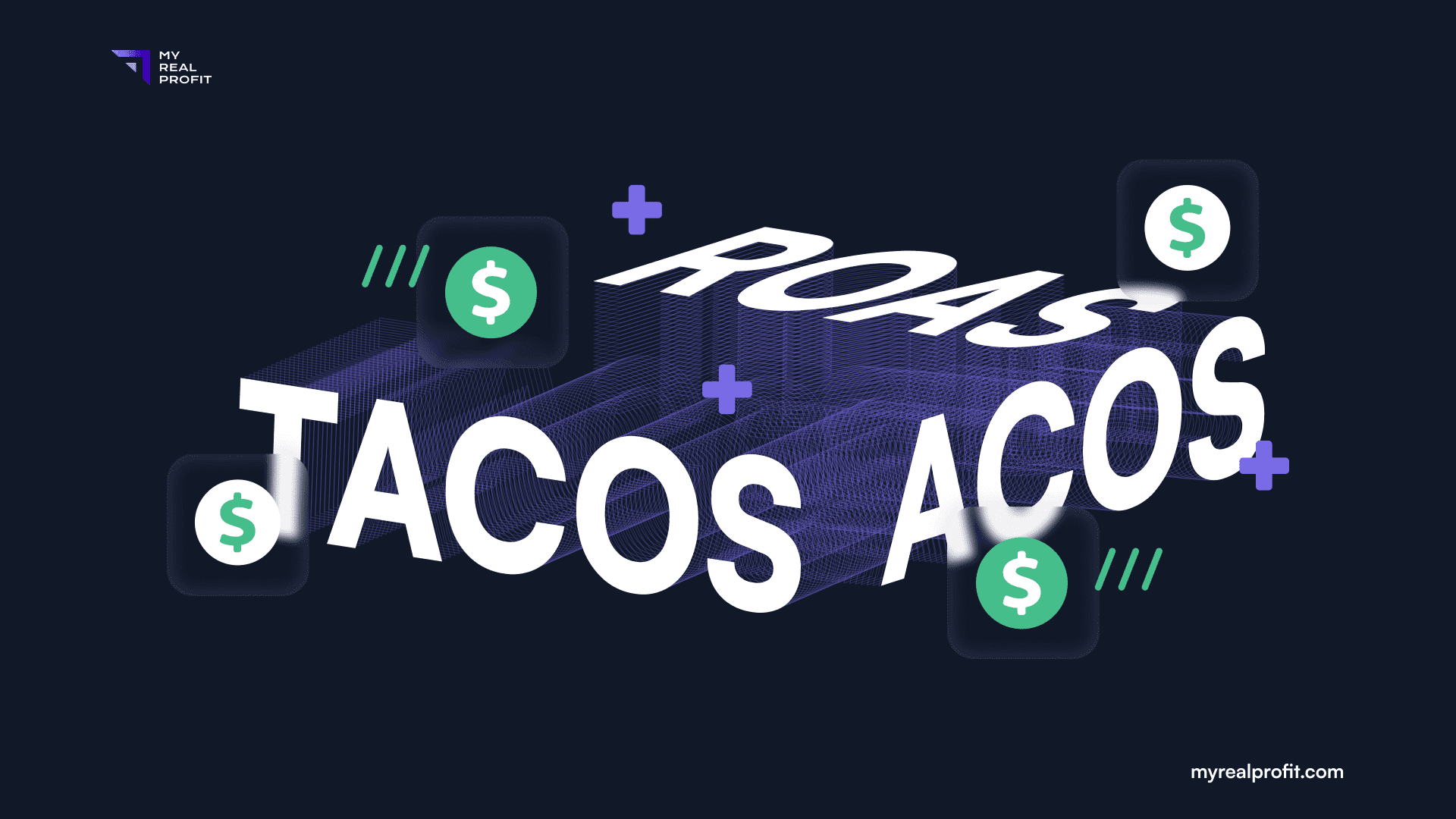
What Is Amazon ACoS?
ACoS is an abbreviation created by Amazon and stands for Advertising Cost of Sales. This metric shows the ratio between the revenue generated from PPC advertising and the money you invest in a PPC advertising campaign. ACoS is one of the key metrics for measuring the profitability of your advertising campaigns.
How Do I Calculate Amazon ACOS?
Amazon sellers can easily calculate their ACoS with this straightforward formula: divide the total advertising cost by the total ad revenue, then multiply that result by 100.
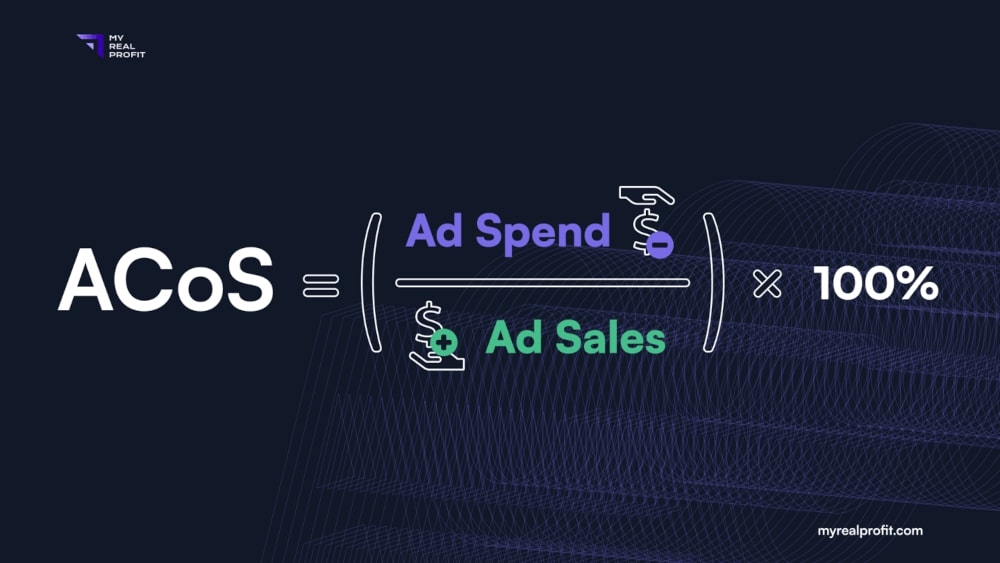
For example, if you spent $200 on PPC advertising for a product and generated $1000 in sales from that advertisement, then your ACoS for that product would be 20%. That is a good number. The Amazon business should aim for an ACoS of around 20-30 percent. Generally speaking, the lower your ACoS, the better. A low ACoS means you are generating more money than spending on PPC advertising.
Remember, a low ACoS is a sign of a successful advertising campaign. If your ACoS is too high, you need to take action and optimize it. One way to do that is to cut down on costs related to negative keywords. This can help you reach the desired target ACoS more easily.
To reduce advertising costs, you must analyze your product and optimize it according to Amazon’s algorithms. For more on how to optimize Amazon products and increase sales, read the article How to Increase Sales on Amazon FBA in 2023: Simple Tips for More Revenue.
What Is ROAS?
Amazon ROAS, which stands for Return On Advertising Spend, is an essential metric for the e-commerce industry. It shows the return on ad spend, or, in other words, how much profit your advertising campaign has generated. ROAS is an important key performance indicator (KPI) in online marketing.
How Do I Calculate ROAS?
ROAS is simple to calculate. ROAS is Ad sales divided by your total Ad spend. For example, if you generated $1,000 in revenue from sales of a particular product and spent $200 on PPC ads, then your return on the ads spending is 5X, or you can say your ROAS is 5 (500%).
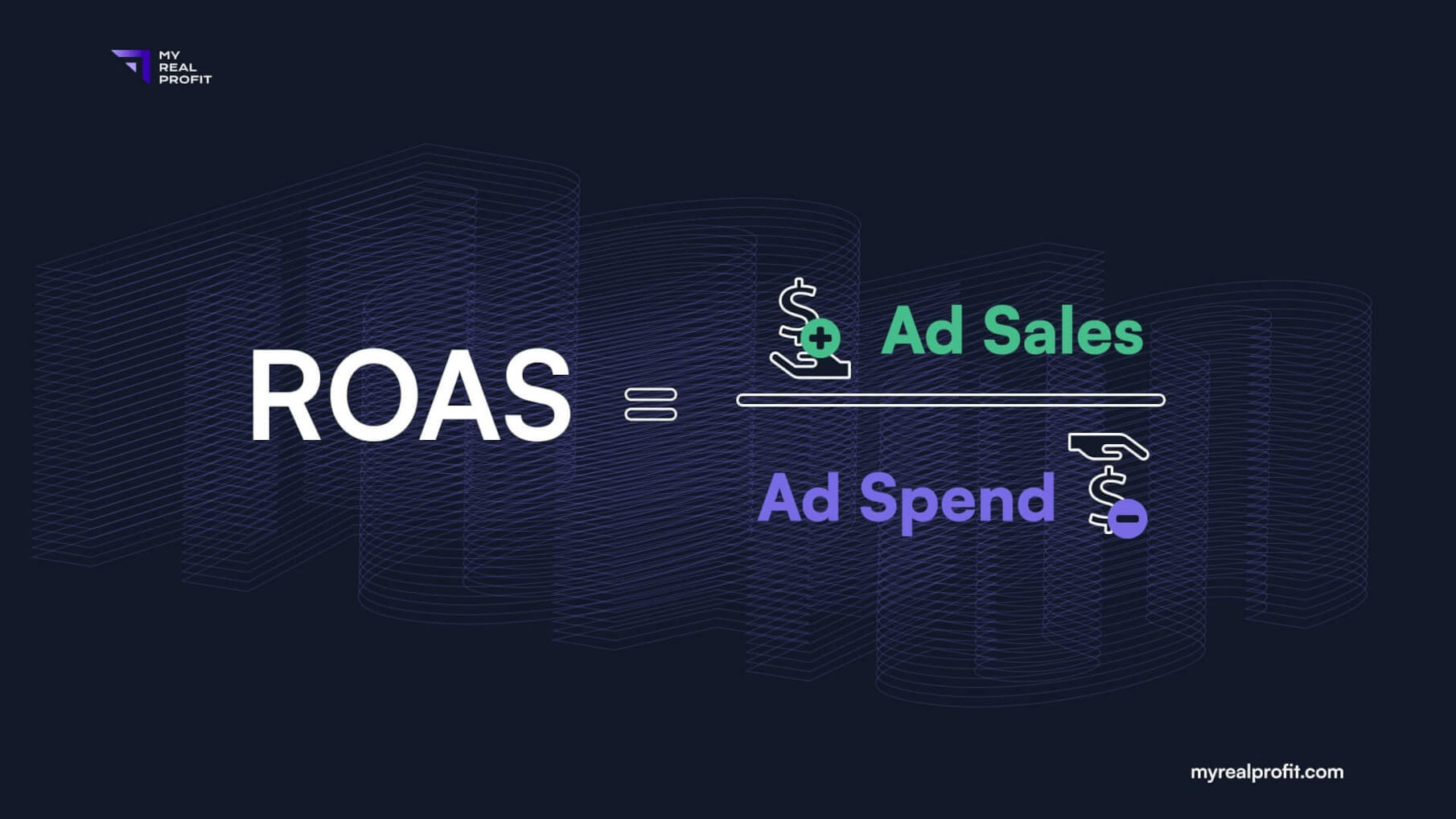
A good return on ad spend (ROAS) ratio depends on your profit margins, operating expenses, and the overall health of your business. However, a ROAS of 3 or 4 is a good return. This mean every dollar invested in advertising translates to an estimated three to four times more return for your Amazon business.
Don’t let your Amazon business face any alarming threats. Keep up with the critical Amazon and E-Commerce KPIs by reading this enlightening post: “20 Critical Amazon and E-Commerce KPIs You Need to Track!“
What is the key difference between ACoS and ROAS?
ACoS and ROAS measure the same metrics, but the two calculations present the information in slightly different formats. The ROAS tells you how much you could anticipate earning from an advertising campaign, and Amazon ACoS tells you the percentage of increase.
For example, if you spend $20 on an ad and generate $100 in sales, the ROAS is 5. At the same time, if an ad costs $20 and generates $100 in revenue, then the ACoS is 20%. In short, ACoS focuses on advertising costs, while ROAS focuses on returns.
What Is TACoS metric?
TACoS stands for Total Advertising Cost of Sales. While ACoS tracks only the results of your advertising efforts, TACoS takes total sales revenue into account — regardless of whether they came directly from Amazon advertising or organic sales.
Amazon sales should use TACoS to analyze:
overall business profitability;
monitor reliance on ads for accounts or specific products;
analyze the effect of ad sales on organic sales.
Generally speaking, the TACoS metric is based on the idea that advertising sales drive organic sales, and this effect can cause positive or negative sales cycles.
A positive sales cycle occurs when an increase in ad spending leads to higher ad sales, and these sales, in turn, improve the organic ranking and lead to more organic sales.
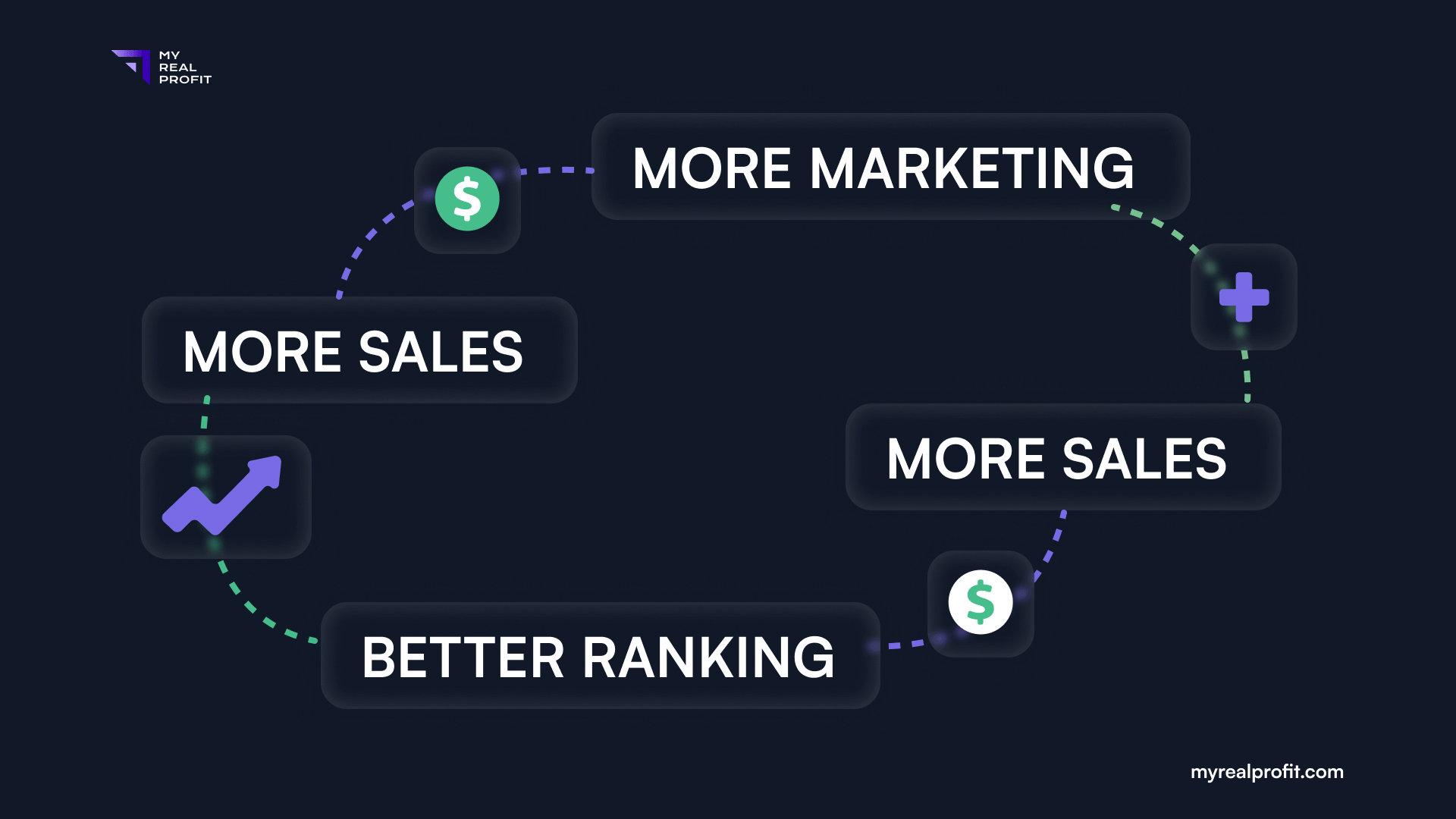
When advertising costs are reduced, fewer units are sold by a specific keyword. This leads to a decrease in organic rankings for that keyword and, thus, fewer organic sales. The dreaded negative cycle then begins.
How Do I Calculate Amazon TACoS?
To calculate TACoS, use this formula: divide all ad spend by your total sales and then multiply that result by 100. The total revenue generated not only from PPC advertising, but also from total account sales (generated from other ad channels and organic sales).
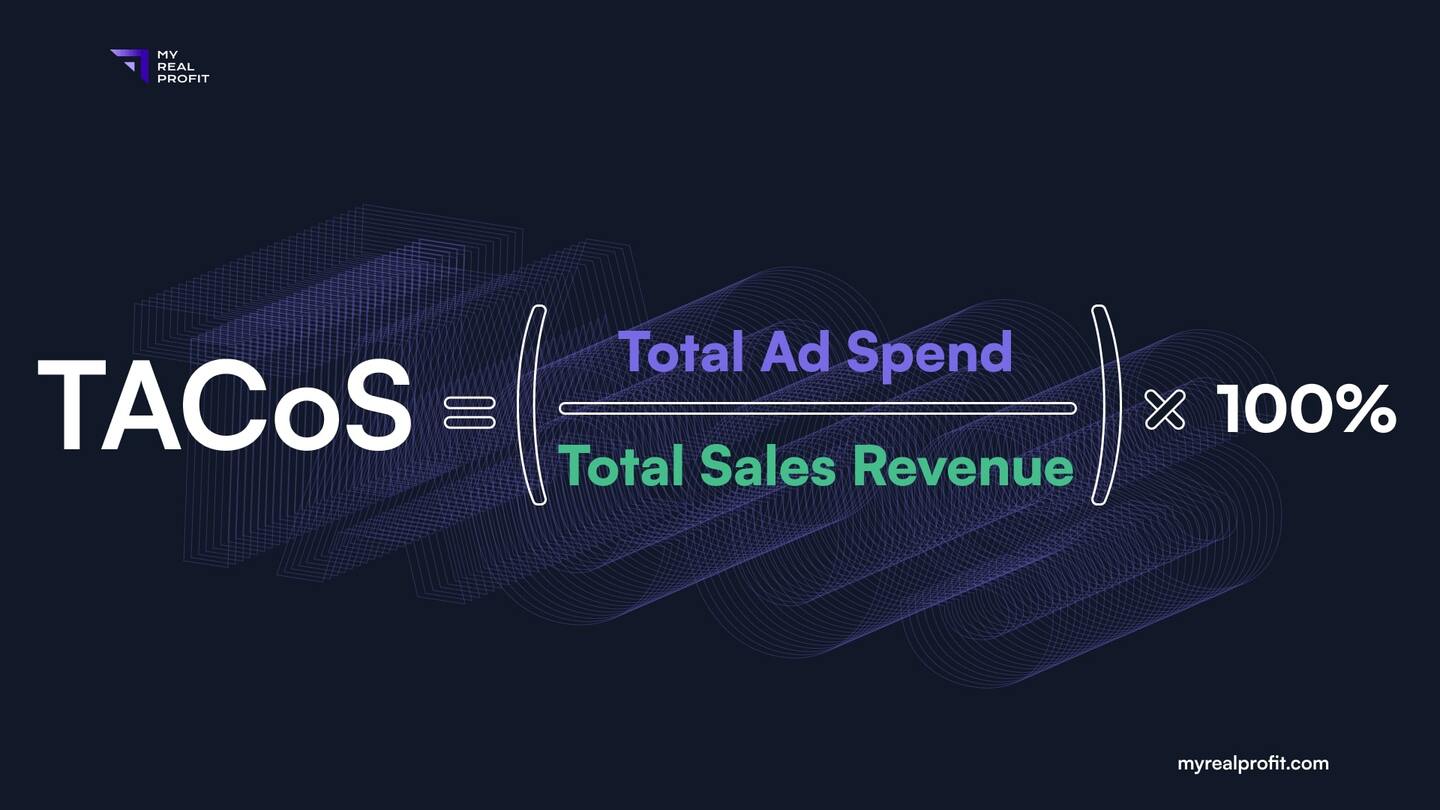
For example, if you spent $100 on PPC advertising for a product and generated $1,000 in total sales, your TACoS for that product is 10%.
How does the level of TACoS affect the performance of Amazon ads?
High TACoS scores is a signal that your ad campaigns are not performing well. You need to adjust your strategy and focus on improving the relevancy of ads, targeting more relevant keywords, and increasing average order value. Low TACoS scores indicate that you’ve optimized your ads in a way that they generate sales without too much cost.
What is the key difference between ACoS&TACoS?
Many sellers focus only on ACoS metrics, but we suggest going beyond these as TACoS metrics show a broader picture.
Let’s imagine that with a budget of $100 for a product ad campaign:
first week was: $200 PPC sales generated and $100 organic sales
second week: $200 PPC sales revenue and $500 organic sales
What do we get?
If we only count ACoS, it would be 50% ($100 ad spend divided by $200 ad sales) for both weeks. Complete failure! At the same time, the picture is entirely different if we look at the total income, including both revenues from advertising and organic sales. Divide $100 of advertising costs by $700 of total sales and get a TACoS equal to 14.3%. Not only did the investment in advertising pay off, but it also sparked an impressive surge in organic sales!
Which metric should I use?
Which metric to choose, ACoS vs. TACoS depends on your goals. If you want to know how your ad spends affect your account health and increase your profit margins, then TACoS is the best metric. However, if you want more detailed information on how your ad campaigns are performing, ACoS can help you get that specific data.
Amazon sellers nearly always use one of three metrics to track their Amazon advertising campaigns: ACoS, TACoS, or ROAS. Whenever you have a query, please make sure that you use the right metric that best answers it.
If you need to track the amount of money spent on Amazon PPC and how much revenue that spend has generated, you need ACoS. ROAS measures how well advertising campaigns perform based on the amount of revenue generated for each dollar spent. Tracking TACoS can show how much is being spent in absolute terms on ads so budgeting decisions can be made with confidence.
In the end, they all reveal the same story in different ways. Regardless of your preference for ACoS, TACoS, or ROAS and the goals you set for them, you have to aim for increased brand awareness and, as a result, your organic sales.
Conclusion
So, Amazon sellers use metrics such as ACoS, TACoS, and ROAS to analyze the effectiveness of PPC campaigns. All of these metrics are useful, and they can help determine which Amazon advertising campaigns are profitable. Therefore, you won`t invest additional money into loss-making.
By leveraging the right analytics, you can drill down and measure the results of all Amazon ad campaigns and product ads to make accurate, data-driven decisions.
Do you want to run successful Amazon marketing campaigns without blowing your budget? To do this, you need in-depth analytics on all of your products. My Real Profit is an automated Analytics Software designed for Amazon sellers. It combines sales, ad spends, Amazon fees, and other metrics for each product to give you a live view of your Amazon sales, profits, and expenses.
With the software, you never have to pull up all the dates concerning your expenses and income again. My Real Profit automatically calculates and displays the profitability of any of your products with its amazon profit calculator.
We are pleased to offer you a free trial of our analytics software for Amazon sellers. Stay on top of your product profitability insights to ensure each decision is based on tangible evidence and helps drive sales. Monitor all the data, including costs and dozens of performance metrics, with our comprehensive profitability analytics so that you can confidently track progress toward success!
Schedule a call for a demo: LINK TO SCHEDULE A DEMO
